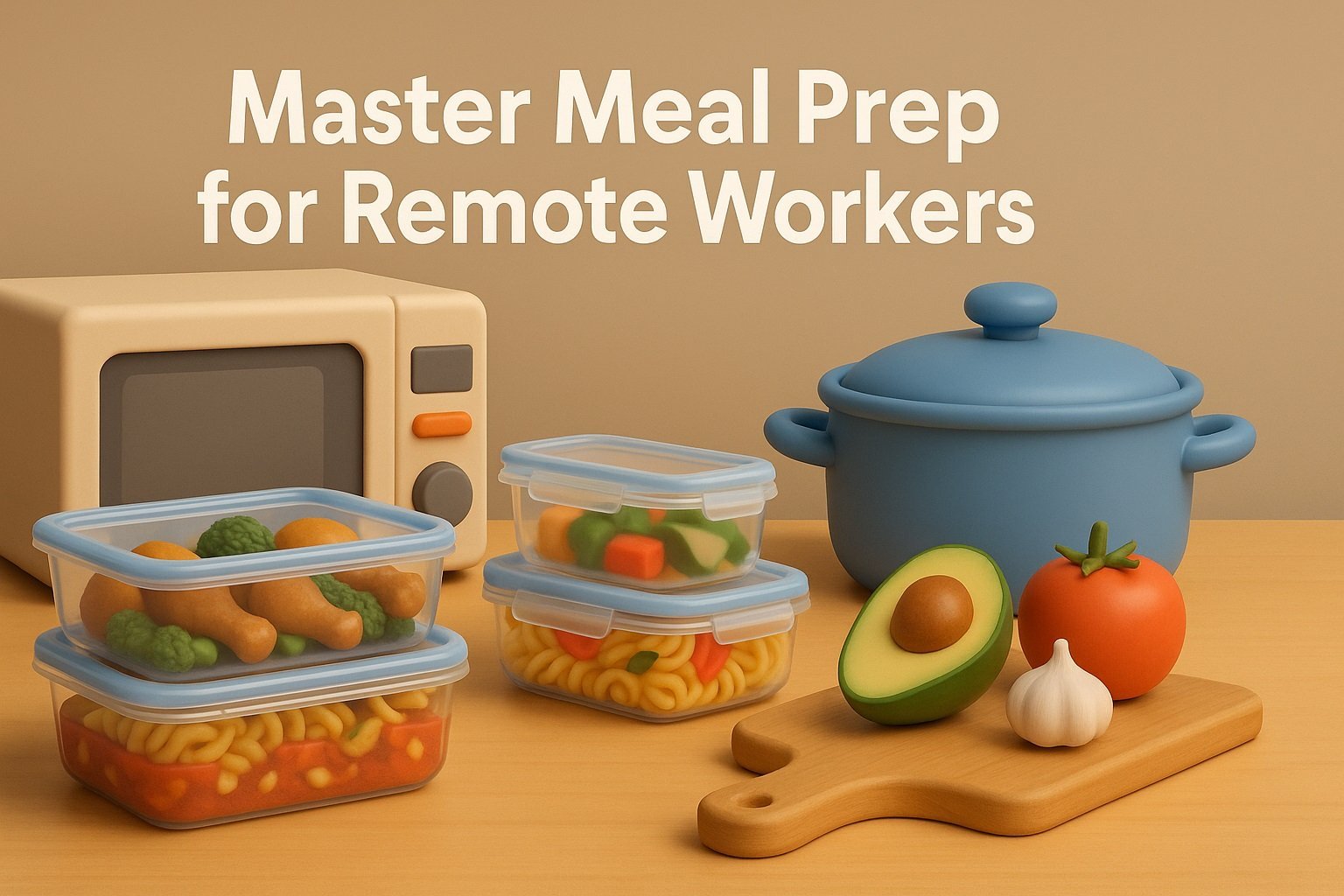
When you shift to remote work, you reclaim more than just desk space at home; you reclaim money you no longer burn on fuel, transit passes, a work wardrobe, and daily take-out lunches. By the end of this guide you’ll know exactly how to calculate your personal savings and five step-by-step tactics to bank an extra ₹30,000–₹1 lakh (US $400–$1,200) per year on travel and meals. Ready to see your pay cheque grow? Let’s dive in.

What Do You Really Spend to Commute & Eat Out?
Use a Free Commuting-Cost Calculator to Get a Baseline
First things first: you need a starting point. Free commuting-cost calculators let you plug in your home-to-office distance, vehicle type or transit fare, fuel price, and even insurance premiums. Within seconds you’ll see your average daily, weekly, and monthly commute cost. Having that number on hand makes it easier to compare against your new zero-commute reality. Many calculators also allow you to factor in occasional rideshares or tolls so you’re capturing every rupee you’d otherwise spend.
Hidden Costs: Parking, Car Depreciation, Peak-Hour Fares
It’s tempting to think fuel is your only commute expense, but parking fees can sneak up on you, especially in city centres where daily rates can surpass ₹300. Then there’s vehicle depreciation: the more you drive, the faster your car’s value drops. If you use ride-hailing during peak hours, surge pricing can tack on 25–50 percent more to each fare.
| Cost Component | Typical Monthly Range (₹) | Notes |
|---|---|---|
| Parking fees | 3,000–9,000 | Depends on neighbourhood and employer subsidies |
| Fuel | 4,000–12,000 | Varies with fuel prices and commute distance |
| Depreciation | 2,500–6,000 | Estimated at ₹2–₹5 per kilometer |
| Peak-hour ride fares | 1,500–4,000 | Only if you supplement your commute with taxi or rideshare services |
Seeing these figures side by side shows that cutting out your daily commute really adds up.
Lunch Leakage: The Latte-and-Take-out Drain on Your Wallet
Next, let’s talk food. Buying lunch every workday might feel like a small treat, but ₹200 per lunch, five days a week, means spending around ₹4,000 per month on meals alone. Add in that daily cappuccino habit at ₹150 each, and you’re looking at an extra ₹3,000 monthly.
Instead of swinging by the café, try preparing simple homemade lunches: a mixed-vegetable pulao or leftover curry can cost less than ₹50 per serving. Brew your own coffee or tea and stash it in a thermal mug. Before you know it, you’ll cut your food-and-drink bill by more than half, freeing up funds for savings, investments, or that weekend getaway you’ve been eyeing.
Strategy 1: Eliminate or Shrink Your Commute

Full-Time WFH vs. Hybrid: Where the Biggest Savings Lie
Going fully remote means zero fuel costs, parking fees, or peak-hour transit surcharges. If your average monthly commute was ₹10,000, switching to full-time work-from-home instantly frees up that entire amount. Hybrid schedules trim that too, but only by a percentage. For example, reducing office days from five to two cuts your commuting bill by about 60 per cent – still significant, but not the full benefit of zero-commute life.
| Work Model | Office Days per Week | Estimated Monthly Commute Spend Saved (₹) |
|---|---|---|
| Full-Time WFH | 0 | 10,000 |
| Hybrid | 2 | 6,000 |
| Office Only | 5 | 0 |
Seeing the numbers side by side makes it clear why full-time remote work delivers the biggest payoff in commute savings.
Negotiate Remote Days & Employer Commuter Benefits
Even if your company isn’t fully remote, you can still boost savings by negotiating extra WFH days. Come prepared with data from your commuting-cost calculator: show how much you save the company in parking subsidies, transit pass reimbursements, or carbon footprint reductions. In addition, ask HR about commuter benefits Pre-tax transit cards or parking stipends can lower your taxable income and cut your out-of-pocket costs on days when you do head to the office.
Track Monthly Wins in a Spreadsheet or App
To stay motivated, record your commuting expenses each month in a simple spreadsheet or budgeting app. Create columns for fuel, parking, and transit fares and subtract your post-remote commute total (which should often be zero). Watching that “Total Saved” cell grow over time – say, from ₹10,000 in month one to ₹60,000 by month six – turns abstract savings into a clear visual win. Many free apps let you categorise transactions automatically, so you can review your progress on the go and celebrate each milestone toward that extra ₹30,000–₹1 lakh per year.
Strategy 2: Master Meal Prep for Remote Workers

10-Minute Batch-Cooking Blueprint (Remote-Friendly Recipes)
Batch cooking does not have to eat up your entire Sunday. Pick two versatile recipes that share ingredients, like a spiced chickpea curry and a vegetable fried rice, and allocate just ten minutes per recipe to prep. Start by chopping all your veggies at once, then cook grains or legumes in bulk. Store portions in airtight containers so you can simply reheat before work. With this blueprint you’ll spend under an hour each week in the kitchen and enjoy five homemade lunches by Friday, no last-minute take-out required.
Smart Pantry Staples That Beat Restaurant Mark-ups
Stock up on low-cost staples that form the backbone of countless meals. Dried lentils, rice, canned tomatoes, frozen spinach and eggs all come in under ₹100 per serving when cooked at home. By contrast, a restaurant charges at least two to three times that amount for the same ingredients plus labour and overhead. Keep spice blends, garlic and onions on hand to add flavour without extra cost. With a well-chosen pantry you transform basic, bulk ingredients into fresh bowls of dal, stir-fried rice or omelettes without paying café prices.
Cost-Per-Serving Math: Homemade vs. Delivery
Seeing the numbers in black and white is motivating. Suppose you order a standard lunch for ₹200. A homemade equivalent rice (₹10), dal (₹15), and mixed vegetables (₹20) cost about ₹45. Even if you include ₹5 worth of cooking gas and ₹10 for spices, your total is only ₹70. That’s a 65 percent savings each meal.
| Meal Type | Total Cost per Serving (₹) | Savings vs Delivery (%) |
|---|---|---|
| Delivery Order | 200 | n/a |
| Homemade Prep | 70 | 65 |
Track these calculations in a simple journal or note app and watch your monthly meal spend drop by thousands of rupees.
Strategy 3: Optimize Home-Office Expenses
One-Time Gear vs. Ongoing Utility Costs
When setting up at home, you’ll invest in desk, ergonomicChair, and monitor, which may total ₹10. Compare that to ongoing costs: lighting, heating or cooling and extra electricity can add ₹500 to ₹1,000 per month. Spread your gear investment over its useful life, say three years, and budget around ₹300 per month. Then add utility overages; your true monthly home-office cost might be ₹800 to ₹1,300. By understanding these figures, you prevent one-time purchases from wiping out your commute and lunch savings.
Tax Deductions & Stipends: What Qualifies in Your Country
Many employers and tax authorities recognise that remote work brings new expenses. In some regions you can claim a prorated portion of home-office utility bills, internet charges or even the depreciation of your gear. Others offer monthly stipends in lieu of office space or commuting allowances. Check with your HR or local tax advisor for specific rules; knowing what qualifies can turn equipment and bills into direct reductions on your taxable income or reimbursable expenses.
Energy-Efficiency Tweaks That Pay Back Fast
Small upgrades can yield quick returns. Swap in LED bulbs for ₹100 each and recover that cost in lower electricity bills within two to three months. Install a smart power strip to cut phantom loads from chargers and peripherals when they’re not in use. Seal drafts around windows or add a weather strip at ₹50 per door to reduce heating or cooling costs. Each tweak may save ₹200 to ₹300 per month, so your home-office setup supports, rather than erodes, the savings you’ve earned by working remotely.
Strategy 4: Bundle “Found Time” Into Money-Making or Money-Saving Habits

Side Hustles You Can Start in Your Former Commute Window
That hour you used to spend on trains or in traffic is now yours to invest in something that earns. Jot down ideas that require minimal setup and can be done between meetings or before logging on:
-
Freelance writing or editing. Pitch short articles or proofread blog posts for ₹500–₹1,000 per piece.
-
Microtask platforms. Complete data-entry or survey tasks that pay ₹50–₹200 each.
-
Online tutoring. Teach English conversation or basic math for ₹300–₹600 per hour.
-
Digital flipping. Buy underpriced domain names or second-hand textbooks and resell them at a markup.
By dedicating just 30–60 minutes a day, you could pocket an extra ₹5,000–₹15,000 per month without ever setting foot in an office.
Using Saved Hours for DIY Projects That Reduce Living Costs
Found time isn’t only about earning more; it’s also about spending less. Swap a few of those free daily minutes into do-it-yourself tasks that cut future bills:
-
Home repairs. Patch small leaks, repaint high-traffic walls or tighten loose handles before you need expensive professional help.
-
Upcycling clothing. Learn basic sewing to mend or restyle an old shirt instead of buying new.
-
Gardening or herb pots. Grow simple greens like coriander or mint on a windowsill to slash grocery bills.
-
Meal-prep enhancements. Use extra time to bottle your own spice mixes or ferment vegetables, making homemade staples that restaurant-style condiments would cost three times more.
Over weeks and months, those DIY habits compound into hundreds or even thousands of rupees saved.
Strategy 5: Reinvest Your Savings for Long-Term Wealth
Auto-Transfer the Amount You Used to Spend
Out of sight, out of mind is your best friend here. Set up an automatic transfer each payday for the exact amount you used to spend on commuting and lunch combined, whether that’s ₹15,000 or ₹25,000 per month, into a separate savings or investment account. You’ll never miss money you never see, and you’ll watch that balance grow without thinking twice.
Commute-to-Coffee Index Fund Example (Compounding Illustration)
To make compounding crystal clear, imagine you invest ₹70 per workday (your average homemade meal savings) and ₹10 per day (your DIY coffee brew savings) for a total of ₹80 each day. That’s about ₹1,760 per month. If you automate monthly purchases of an index fund that averages 8 percent annual return, here’s what could happen:
| Time Horizon | Approximate Balance (₹) |
|---|---|
| 1 year | 21,120 |
| 5 years | 124,800 |
| 10 years | 308,000 |
In a decade you’d turn small, daily discipline into well over three lakh rupees – money you wouldn’t have otherwise if you let those commute and coffee costs slip through your fingers.
FAQ
Does working remotely really save money on commuting?
Absolutely. When you eliminate daily fuel purchases, parking fees, peak-hour transit surcharges and the wear and tear that drives up your car’s depreciation, those savings add up quickly. A typical monthly commute spend of ₹10,000 vanishes, and even a hybrid schedule that cuts office days by more than half still delivers thousands of rupees back into your pocket each month.
How do I calculate my exact commute cost savings?
Start by using a free commuting-cost calculator: enter your home-to-office distance, fuel price or transit fare, insurance premiums, parking rates and any tolls or rideshare surcharges. That generates your pre-remote daily, weekly and monthly commute expenses. After you’ve gone remote, simply compare your zero or reduced spend to that baseline. Tracking both sets of numbers in a spreadsheet or budgeting app makes the exact savings crystal clear.
What’s the cheapest way to prep lunches when working from home?
Batch cooking with simple staples is your best friend. Pick recipes that share ingredients – think rice, lentils, vegetables and basic spices – then prepare them in bulk. A homemade meal using rice (₹10), dal (₹15) and mixed veggies (₹20), plus ₹5 of gas, still costs under ₹70 per serving versus ₹200 or more for a take-out lunch. Stock up on pantry staples like dried lentils, canned tomatoes and frozen greens to keep per-meal costs low all week long.
Can remote workers claim tax deductions for a home office?
In many locations, yes. Depending on your country’s rules and your employer’s policies, you may be able to deduct a prorated share of home-office utilities, internet bills or the depreciation of your desk and chair. Some companies even offer monthly stipends in lieu of office space or commuting allowances. Check with HR or a local tax advisor to see which expenses qualify where you live.
How much can I save annually by making coffee at home instead of buying it out?
Let’s run the numbers. If you typically spend ₹150 on a daily cappuccino five days a week, that’s about ₹3,000 per month. Brewing at home for roughly ₹10 per cup brings your cost down to ₹200 monthly. You’d save around ₹2,800 per month, or roughly ₹33,600 over a year – money you can reinvest or set aside without noticing the difference in your day.
Do hybrid workers still benefit from remote-work savings strategies?
Definitely. Even reducing office commute days from five to two cuts your commuting budget by around 60 percent. You can still apply meal-prep tactics on your home days, negotiate commuter benefits for the days you do travel in, and track all these savings in the same spreadsheet or app. While full-time remote delivers the biggest wins, hybrid arrangements still unlock substantial cost reductions.
What tools track both commute and meal savings together?
Pair a free commuting-cost calculator with a budgeting or expense-tracking app that lets you categorise transactions. Many apps automatically sort fuel, transit, dining-out and grocery spending. For a more hands-on approach, a simple spreadsheet with separate tabs for commute and meals plus formulas that subtract your post-remote totals from your baseline gives you a running “Total Saved” figure you can watch grow each month.

























